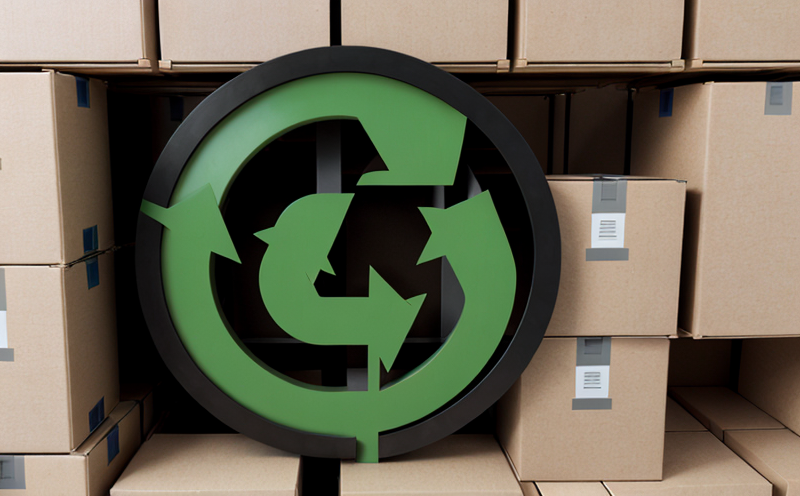ASTM E3012 Material Flow Analysis for Circular Economy Reporting
The ASTM E3012 standard provides a comprehensive framework to quantify material flows in waste and recycling streams, thereby enabling accurate reporting on circular economy metrics. This service is essential for organizations aiming to improve resource efficiency, reduce environmental impact, and comply with sustainability goals. By applying this method, businesses can better understand their internal processes and external supply chains, fostering innovation and sustainable development.
Material flow analysis (MFA) involves tracking materials through various stages of production, use, and disposal. For waste management and recycling sectors, MFA helps identify inefficiencies, optimize resource recovery, and enhance overall sustainability performance. ASTM E3012 specifically addresses the complexities of modern waste streams by providing standardized protocols for data collection, processing, and reporting.
The ASTM E3012 process typically begins with sample collection from various points in the waste or recycling stream. Specimens are then prepared according to standard procedures outlined in the document. Instrumentation used may include scales, sorting machines, and spectroscopic analyzers depending on material type and analysis requirements. Data obtained is analyzed using advanced statistical methods to calculate material recovery rates, diversion percentages, and other key performance indicators.
Reporting generated from ASTM E3012 follows strict guidelines ensuring transparency and comparability across different facilities or jurisdictions. Key metrics reported include total waste generated, recycled materials, landfill inputs, energy savings achieved, and greenhouse gas emissions reductions. These data points are crucial for stakeholders involved in the circular economy, including policymakers, investors, and environmental groups.
Implementing ASTM E3012 can lead to significant benefits for organizations committed to sustainability. Companies may discover opportunities for reducing waste generation, increasing recycling rates, and enhancing resource efficiency throughout their operations and supply chains. Additionally, adherence to this standard enhances credibility among customers and partners seeking environmentally responsible suppliers.
A successful implementation of ASTM E3012 requires careful planning and collaboration between technical experts in the laboratory setting and industry professionals familiar with waste management processes. Proper training on the use of the standard is also recommended to ensure accurate interpretation and application of its provisions.
| Phase | Data Collected | Analyzed Metrics |
|---|---|---|
| Sample Collection | Weighed materials, sorted fractions | Total waste generated, recycled material types |
| Sorting and Classification | Differentiated between recyclables and non-recyclables | Recycling rates by category |
| Energy and Emissions Calculation | Measure energy input/output, GHG emissions | Energy savings realized, CO2 equivalents reduced |
The table above summarizes the main phases of an ASTM E3012 study along with corresponding data collected and analyzed metrics. This structured approach ensures thorough examination of material flows within waste streams.
Industry Applications
- Waste Management Facilities: Track incoming waste streams and monitor progress towards diversion targets.
- Recycling Plants: Optimize sorting processes to maximize recovery of valuable materials.
- Manufacturing Industries: Quantify raw material inputs and recovered resources used in production cycles.
- Environmental Consultants: Provide robust data for environmental impact assessments related to waste management practices.
The ASTM E3012 standard is particularly beneficial when designing policies aimed at promoting a circular economy. It offers valuable insights into how different sectors contribute to or hinder sustainable development goals, making it an indispensable tool for decision-makers across various industries.
By incorporating ASTM E3012 material flow analysis into their operations, organizations can demonstrate leadership in sustainability while simultaneously improving operational efficiency and reducing costs associated with waste disposal. This approach aligns perfectly with global trends towards more circular economies where resources are kept in use for as long as possible before being recycled or disposed of.
Why Choose This Test?
The ASTM E3012 Material Flow Analysis offers a robust framework that goes beyond traditional waste management practices by providing detailed insights into material flows throughout the entire lifecycle. Its standardized procedures ensure consistent and reliable results, which are vital for making informed decisions regarding resource use and environmental impact.
One of the key advantages of this test is its flexibility. It can be adapted to suit specific needs depending on the nature of the waste stream being analyzed. Whether it's a small-scale recycling facility or a large manufacturing plant dealing with complex supply chains, ASTM E3012 provides the necessary tools and knowledge to tailor analyses effectively.
Another significant benefit is its role in driving innovation within the circular economy sector. By identifying inefficiencies early on through detailed material flow analysis, businesses can implement targeted improvements that lead to greater efficiency gains over time. This not only reduces operational costs but also contributes positively to environmental conservation efforts globally.
Moreover, compliance with ASTM E3012 is increasingly becoming a requirement for many companies operating in regulated markets or seeking certification under recognized sustainability standards like ISO 14001:2015. Ensuring adherence to these standards helps enhance corporate reputation and opens up new business opportunities by signaling commitment to responsible resource management practices.
In summary, choosing ASTM E3012 material flow analysis ensures comprehensive understanding of waste and recycling processes while promoting best practices aligned with broader sustainability objectives. It serves as a cornerstone for developing effective strategies that support both economic growth and environmental stewardship in today’s rapidly evolving world.





